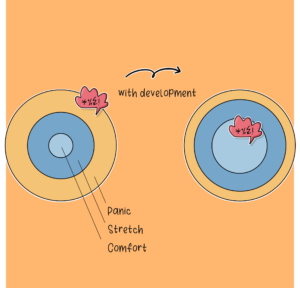
How to Give Feedback
- 11/28/2022
- 2:03 pm

Giving feedback is a lot more challenging in practice than it seems. It requires attitude, timing and technique.
Let’s look at attitude first: What’s the purpose in giving someone feedback? To let off steam? Then, I button my lips. To put someone down? Button lips. To appear knowing? Lips. If I am interested in improving the working relationship, alerting someone to a potential blind spot, and improving team productivity, I can give feedback. If the time is right.
Now timing: Have we enough time for a conversation? Feedback is not done while passing by on the corridor. Is the other person open to feedback? Perhaps, they’re having a bad day and are not in the mood. If they don’t say yes, I let them live without my observation for a little bit longer. I also check with them, when a suitable time would be.
So far, so easy. Now comes the tricky bit: technique — how to give feedback in three steps
- I describe what I observed,
- its effect on me, and
- what I expect in the future.
The first step is a challenge, because most people state their interpretation or judgement of what happened, not the behaviour itself. The statement needs to be clear (anything else will trigger defensiveness) and about something in the recent past (or else the person may have forgotten the incident).
For example, “your presentation was terrible” is not feedback, it’s a put-down. “When you present your conclusions before you show the supporting data, I feel confused and frustrated. In future, I expect you to show the data first” is feedback.
“You ran that meeting brilliantly” is praise, not feedback. While the receiver basks in the glow of praise for a while, they may be none the wiser what it is they did that helped them to run the meeting so well. “The way you summarised the discussion at regular intervals in yesterday’s meeting helped me follow the complicated discussion more easily and to reach a decision. I’ve heard similar comments from other participants. Please keep it up!” That’s feedback.
In the first case, the recipient knows what they need to consider improving; in the second, they know where one of their skills lies. There is no substitute for practice when it comes to feedback.
Finally, we come to what we expect as behaviour from the person in future. This is where many people start their feedback, and leads to a poor response from the feedback receiver. When they understand what is triggering this request (Step 1) and how important it is to us (Step 2), it is much more likely they can listen to Step 3.
And even when they listen, from their perspective our request may seem unreasonable. So, sometimes a satisfactory resolution must be negotiated. Whichever way it goes, we need to hear their commitment to the agreed requested behaviour by the end of the conversation.
Latest Blog Posts


Five Ingredients for The 24/7 Lab

How Not to Take “No” for an Answer

